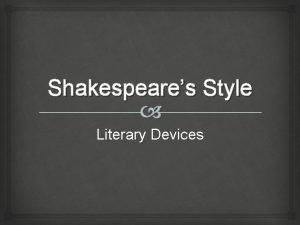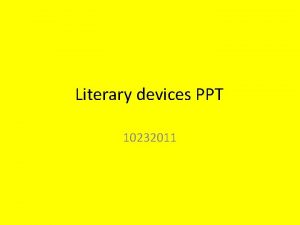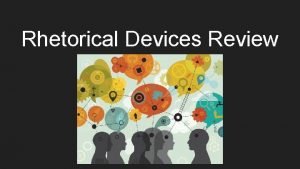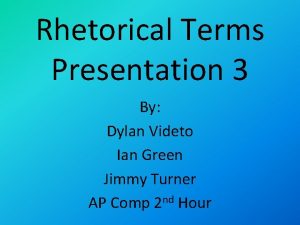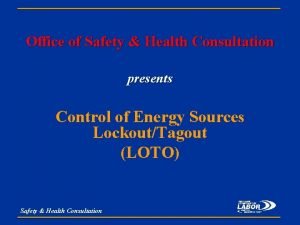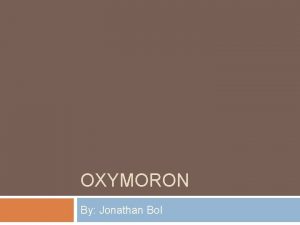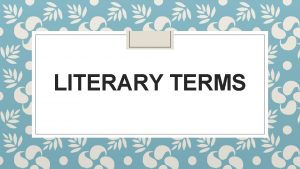Literary Device Oxymoron An oxymoron is a statement






- Slides: 6

Literary Device: Oxymoron An oxymoron is a statement or phrase that contains conflicting opposites. The word itself is an oxymoron (oxy comes from a Greek derivative of sharp, moros means dull). Examples: Holy War, Forward Retreat, Living Dead, Deafening Silence, Dry Lake, Crash Landing, Numb Sensation, Stand Down, Metal Wood (Golfing), Detailed Summary, Jumbo Shrimp, Vegetarian Meatballs, Pretty Ugly, Work Party, Loner’s Club, Gourmet Pizza, User Friendly, Non-working Mother, Microsoft Works, Political Cooperation. Re-examine the last four italicized and bolded examples. How is each of these an example of an oxymoronic phrase containing opposites?

from A Midsummer Night’s Dream (Act V, scene i)- William Shakespeare Toward the end of the play, Theseus, the ruler of Athens, reads an announcement concerning a bumbling troupe of actors and the version of “Pyramus and Thisbe” they are about to perform (horribly) for the court. Pay attention to Theseus’ reaction to the contradictory playbill. THESEUS: (Reads) “A tedious brief scene of young Pyramus And his love Thisby; very tragical mirth. ” Merry and tragical! tedious and brief! That is hot ice and wondrous strange snow. How shall we find the concord of this discord?

A Midsummer Night’s Dream – Author’s Purpose • What two oxymoronic statements are contained within the actual play announcement? tragical mirth tedious brief _______ and ________ • What do these oxymoronic phrases suggest simultaneously about the play of Pyramus and Thisbe? _____________________ These two examples of oxymoron within the playbill _____________________ suggest that the play within the play will somehow simultaneously be both short and long in duration and _____________________ be both joyous and tragic. ____________________

A Midsummer Night’s Dream – Author’s Purpose • Locate and list the oxymoronic phrases embedded within Theseus’ response to the play announcement: Merry and tragical… …hot ice… …tedious and brief… …the concord of this discord… • What do these conflicting phrases suggest concerning Theseus’ expectations of the play he is about to view? _____________________ After reading the play’s advertisement, Theseus is _____________________ confused and wonders aloud how one drama can be merry and tragic, tedious and brief. He compares these _____________________ conflicting ideas to the impossibility of hot ice and ____________________ questions if harmony can be found in conflicting forces. _____________________

A Midsummer Night’s Dream – Author’s Purpose • How could these oxymoronic phrases be considered a form of foreshadowing, readying the reader for the rambling, conflicting play within a play that is about to unfold? Exactly meeting Theseus’ amazed expectations, the play _____________________ within a play in Shakespeare’s A Midsummer Night’s Dream __________________________________________ is an unholy mess full of missed cues, confused identities, ____________________ and scrambled lines. Theseus’ words prove to be prophetic.

Answer the essay question below: • In A Midsummer Night’s Dream, William Shakespeare weaves a contradictory web of fantasy and reality. In a wellorganized essay, complete with direct text evidence and relevant commentary, examine how Shakespeare uses oxymoronic phrases as foreshadowing agents within the first scene of the final act. Red – Major Writing Task Blue – Minor Insights/Instructions
